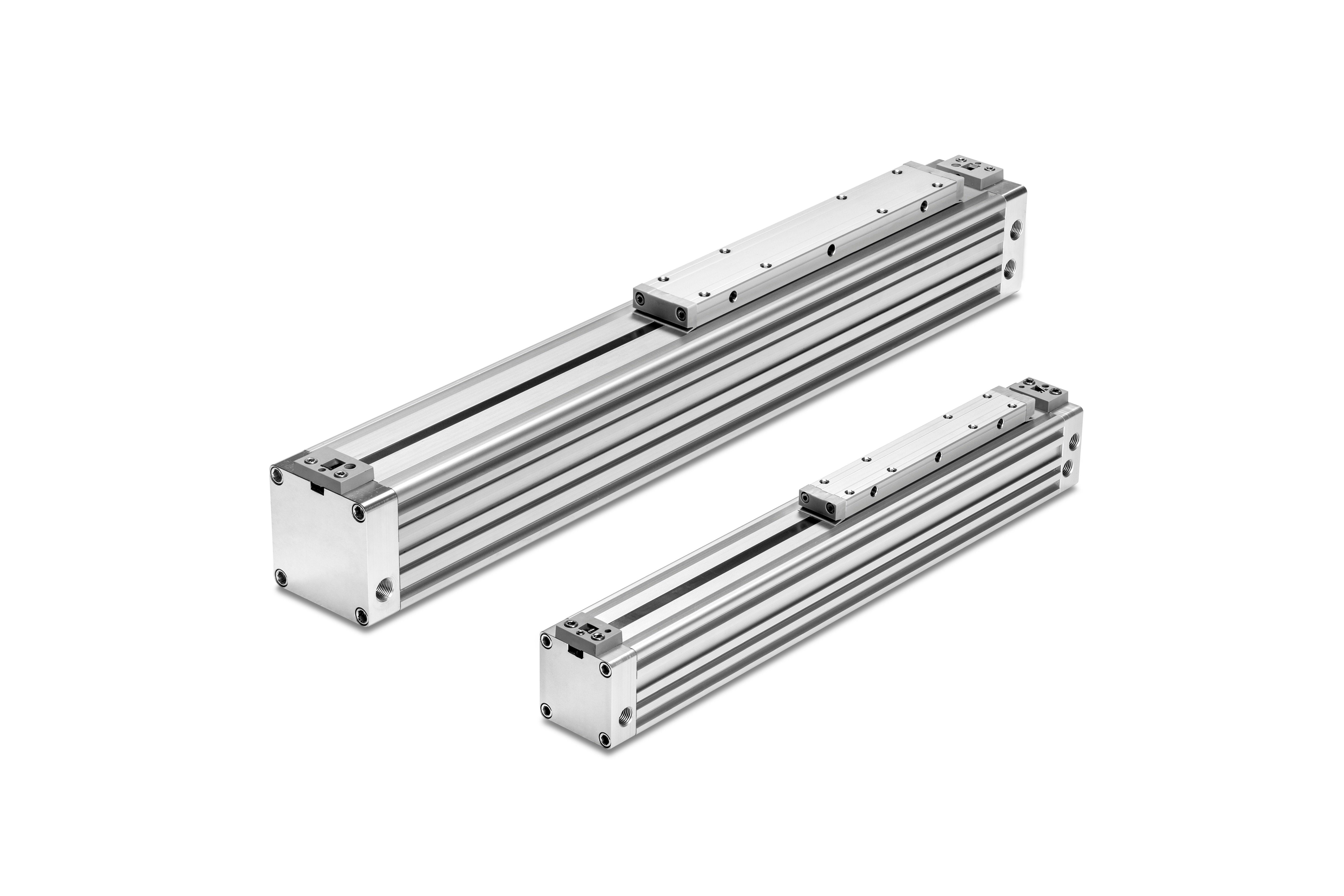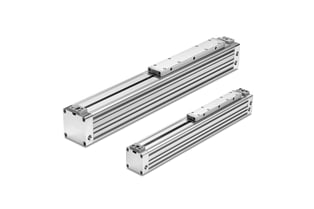

When you're looking to move a load in a straight line in an industrial application, a linear actuator is probably your answer. Linear actuators, also called cylinders, that movement possible. Without them, automated equipment could not exist. But the type of actuator depends on the situation. Each type of actuator has its own pros and cons, but understanding how each kind of linear actuator works will help you decide.
What is a Linear Actuator?
- A linear actuator is any mechanical device that converts energy to create motion in a straight line.
- Linear actuators may be powered by pressurized fluid or air, as well as electricity.
- Hydraulic actuators are powered by fluid, pneumatic actuators are powered by compressed air.
- Linear actuators are typically used in industrial automation and machinery, in applications along with motors, valves, pumps, switches, dampers, and in many other places where linear motion is required.
How Do Linear Actuators Work?
Hydraulic and pneumatic actuators differ in how they work.
Hydraulic actuators — also known as hydraulic cylinders — have a hollow cylinder with a piston inserted. An unbalanced pressure applied to the piston generates force that can move an external object.
Since liquids are nearly incompressible, a hydraulic cylinder can provide controlled, precise linear displacement of the piston, but only along the axis of the piston. A good example is a hydraulic car jack.
Pneumatic actuators (or pneumatic cylinders) are similar. However, they use compressed gas to generate force instead of a liquid. They work similarly to a piston in which air is pumped inside a chamber and pushed out of the other side of the chamber.
One of the reasons pneumatic linear actuators are preferred to other types of actuators is the fact that the power source is simply an air compressor. Because air is the input source, pneumatic actuators are able to be used in many places of mechanical activity.
What Are the Benefits of Linear Actuators?
Both hydraulic and pneumatic actuators have a history of simple, time-tested applications.
For Hydraulics
- Hydraulic actuators are great when a very high force is needed. They can produce forces 25 times greater than pneumatic cylinders of equal size, and operate in pressures of up to 4,000 psi.
- They can hold force and torque constant without the pump supplying more fluid or pressure due to fluid incompressibility.
- Their pumps and motors can be placed a considerable distance away from the application, with minimal loss of power.
For Pneumatics
- Pneumatic actuators work best when the application calls for strong, light, simple, and fast.
- They work best in areas with extreme temperatures, such as -40°F to 250°F. By using air, pneumatic actuators meet explosion protection and machine safety requirements, because they create no magnetic interference due to lack of motors.
- Compared to other actuators, along with their respective power sources, pneumatics typically have a much lower overall cost. The actuators are also light weight, have more durable components and require minimal maintenance.
When you need pneumatic actuators look no further than W.C. Branham. We design and manufacture a wide range of popular rodless pneumatic actuators (cylinders) that can be integrated into endless industrial automation applications. It's a good bet that we have more than one solution for your application depending on your budget.


